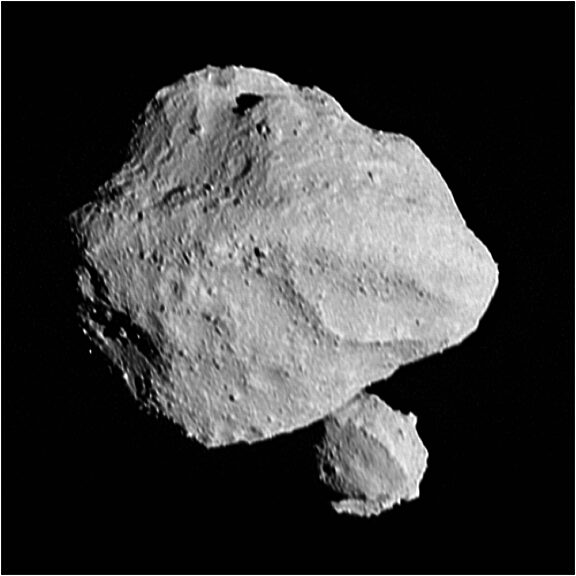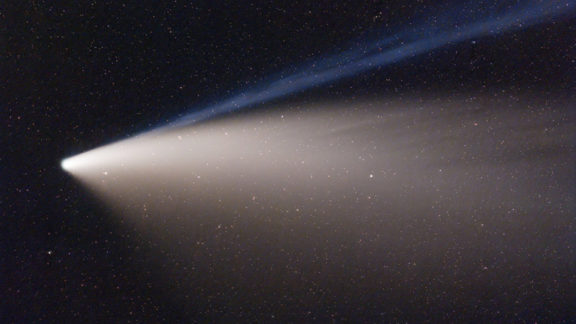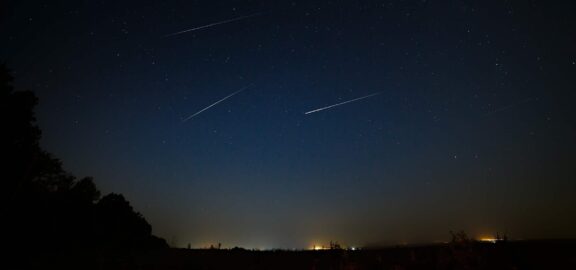Asteroids vs comets vs meteorites/meteoroids/meteors

Written by
Kate Howells
Public Education Specialist, The Planetary Society
January 26, 2024
Our Solar System is filled with countless asteroids, comets, and other small worlds left over from the disk of dust and gas that formed the planets 4.5 billion years ago. Some of them come close to the Earth, and some enter our atmosphere and even make it to the ground. Others remain far away, in the distant reaches of the Solar System. All of them are scientifically interesting and can teach us about our place in space.
What is an asteroid?
An asteroid is a small, rocky or metallic object orbiting the Sun.
Asteroids are usually defined as being larger than 1 meter (3.28 feet) in diameter. Free- floating rocky objects smaller than asteroids are called meteoroids, and those larger than asteroids (large enough to become round through hydrostatic equilibrium) are called dwarf planets. Most asteroids are located in the asteroid belt between Mars and Jupiter, but some come near to or cross Earth’s orbit.
Asteroids are important to study because they are leftover planet-building materials from the birth of our Solar System. Unlike Earth rocks shaped by eons of weathering and geologic activity, asteroids have remained largely unchanged, making them time capsules that can teach us about the origin and evolution of our Solar System. Missions like OSIRIS-REx and Hayabusa2 have brought samples from asteroids back to Earth for us to study.

What is a comet?
A comet is a small, icy, and dusty object orbiting the Sun.
Comets formed in the outer Solar System, far away from the Sun where ice is stable. Most of them spend most of their time far beyond the orbit of Neptune, and all spend most of their time beyond Jupiter. Some have orbits that bring them occasionally through the inner Solar System including sometimes past Earth’s orbit. When they are in the inner Solar System and closer to the Sun’s influence, their ice sublimates — that is, it goes from ice directly to gas — kicking off dust and forming the coma and tails they are famous for.

What is a NEO?
A NEO (near-Earth object) is an asteroid or comet that comes within 50 million kilometers (30 million miles) of Earth’s orbit, representing a possible danger to our planet.
Using the cut-off for asteroid diameter of 1 meter, there are estimated to be more than half a billion near-Earth asteroids. Although more than 30,000 of these have already been discovered, that represents only a small fraction of the total. But because it’s easier to find larger objects, we think we have found more than 90% of the asteroids 1 kilometer (0.6 miles) and above. The biggest threats to our planet are the least likely to sneak up on us, but there are still many smaller asteroids lurking in the darkness of space that could still be dangerous to us.
Planetary defense is the effort to find, track, and characterize near-Earth objects and prepare technologies for deflecting them in case one is ever headed our way.
What is a meteoroid?
A meteoroid is a rocky or metallic object in space with a diameter of less than 1 meter (3.28 feet). Very tiny meteoroids — with mass smaller than 1 gram or so — are often called micrometeoroids or space dust.
What is a meteorite?
If part of a meteoroid, asteroid, or comet makes it to the ground, it is called a meteorite.
What is a meteor?
A meteor is the streak of light that occurs when an object (e.g., an asteroid or meteoroid) hits the Earth’s atmosphere at high speed causing the object to heat up and glow.
Meteors are also known as shooting stars, although they aren't actually stars at all.
Meteor showers happen when the Earth passes through debris shed by a comet or asteroid. They reoccur at about the same time every year when Earth comes around in its orbit and passes through the debris again.

Support our core enterprises
Your gift today will go far to help us close out the year strong and keep up our momentum in 2026.
Donate

 Explore Worlds
Explore Worlds Find Life
Find Life Defend Earth
Defend Earth

